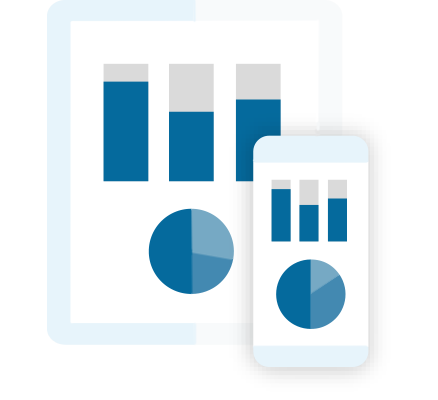Email marketing should be a powerful tool for driving engagement, nurturing leads, and delivering high-quality prospects to sales. But what if your best-performing campaigns were built on false data?
Bots—whether from security filters, automated link scanning, or malicious activity—have been distorting email performance for years. When clicks and opens are artificially inflated, it creates three major problems for marketing teams:
1️⃣ Inflated Metrics: Your reports show sky-high engagement, but the numbers are misleading, making it harder to optimize campaigns effectively.
2️⃣ Unreliable Leads for Sales: Bots trigger lead scoring models, pushing fake prospects into the pipeline and wasting sales teams' time.
3️⃣ Broken Automations: Workflows fire at the wrong time, nurture sequences get skipped, and remarketing efforts chase non-existent engagement.
Email marketing should be a powerful tool for driving engagement, nurturing leads, and delivering high-quality prospects to sales. But what if your best-performing campaigns were built on false data?
Bots—whether from security filters, automated link scanning, or malicious activity—have been distorting email performance for years. When clicks and opens are artificially inflated, it creates three major problems for marketing teams:
1️⃣ Inflated Metrics: Your reports show sky-high engagement, but the numbers are misleading, making it harder to optimize campaigns effectively.
2️⃣ Unreliable Leads for Sales: Bots trigger lead scoring models, pushing fake prospects into the pipeline and wasting sales teams’ time.
3️⃣ Broken Automations: Workflows fire at the wrong time, nurture sequences get skipped, and remarketing efforts chase non-existent engagement.
This isn’t just an inconvenience—it damages your marketing effectiveness and sales efficiency. That’s why we built BotShield, our advanced detection system that now catches 52% more fake clicks—giving you cleaner data, better-qualified leads, and more accurate automation.
The Rising Threat of Fake Clicks and Opens
Bot activity isn’t new, but in recent years, it has skyrocketed. As email security tools become more aggressive, they often pre-load images and scan links before a real person even sees the email. This results in inflated open and click rates, making it harder to separate real engagement from bot interference.
Many email marketers have seen their open rates increase—only to find that these additional interactions aren’t translating into conversions.
In December 2024, over 60% of recorded opens can be attributed to bots rather than real recipients. This presents a growing challenge where financial service marketers might think their marketing is more effective than it really is, leading to wasted investment in strategies that don’t resonate with human users.
To make matters worse, bot traffic varies by audience and email security measures in place, making it difficult to establish a one-size-fits-all filtering solution without advanced detection tools like BotShield.
How Fake Clicks Corrupt Marketing Data
When bots inflate your email metrics, the damage goes beyond misleading reports. Here’s how it disrupts your entire marketing and sales funnel:
1. Misleading Engagement Metrics
Marketers rely on data to fine-tune campaigns, optimize content, and measure success. But when bots engage, your reports become unreliable. You might A/B test subject lines based on bot-driven opens, leading to false insights and wasted resources.
2. Unqualified Leads Enter the Sales Funnel
Lead scoring models often rely on email interactions. If a bot clicks a link, that lead’s score increases—even if the recipient never actually saw the email. This means sales teams waste valuable time chasing leads that were never interested in the first place.
When sales teams repeatedly encounter leads that show high engagement but never respond, it reduces confidence in marketing-generated leads, straining the relationship between marketing and sales teams. A refined approach to filtering out bot interactions ensures a higher quality pipeline, allowing sales to prioritize prospects who are genuinely interested.
3. Automation Workflows Break Down
Many nurture sequences are triggered by an email open or click. When bots interact first, real prospects can get skipped or pushed further down the funnel before they’ve even engaged. This disrupts marketing automation, reducing its effectiveness.
Beyond nurture sequences, automated reporting dashboards can be thrown off when false engagement inflates conversion rates. If a system incorrectly assumes an email sequence is performing well due to bot activity, it may reduce budget for truly effective campaigns.
How to Remove Fake Clicks in Popular Marketing Platforms
Many marketing automation tools allow users to filter out fake clicks, but the problem is that these solutions work after the clicks have been captured—meaning metrics, leads, and automations are still affected. Here’s how each platform handles bot filtering.
Salesforce Marketing Cloud Account Engagement (Pardot)
Pardot has a solution called Metrics Guard that temporarily filters bot clicks based on “surges” of clicks. They also have visitor filters that block IP addresses associated with email security scanners, and Pardot provide about 30 IP ranges. You can add your own IP ranges too.
As great as this feature is, if you’re targeting professional investors, it might not catch many bots. We audited the IP list against our open and click activity and found they would catch just 0.02% of clicks and 0.3% of opens. StoneShot currently blocks 52.5% of clicks and 46.1% of opens.
Adobe Marketing Cloud (Marketo)
Marketo provides built-in features to filter out email bot activity. Users can enable filters that match against the Interactive Advertising Bureau (IAB) bot list and detect patterns where multiple activities occur in under a second. These settings help in identifying and excluding bot interactions from metrics.
Like Pardot, Marketo provide a tool to catch bots before they enter their platform using a list of IP addresses. We checked this list and found they’d trap 0.4% of bot clicks (we catch 52.5%) and no bot-generated opens. We’re unsure if you can add your own IP addresses to the list.
ClickDimensions
ClickDimensions has acknowledged instances where non-human interactions, particularly with Office 365 hosted accounts, lead to unexpected click events. They have been investigating these occurrences to refine their filtering mechanisms and reduce the impact of such bot activities on email metrics. They appear to enable their NHI filtering feature on request.
Mailchimp
Mailchimp employs automatic suppression of suspicious activities to mitigate the impact of bot clicks. However, we couldn’t find any specific information other than detail on how to remove bot opens generated by Apple MPP.
Summary
While these platforms offer various methods to filter out bot activity, it’s important to note that if you’re targeting investment professionals, you’ll see a lot of unwanted bot activity. Consequently, metrics, lead scoring, and automation workflows may still be affected by initial bot interactions.
Implementing proactive measures, such as advanced detection systems like BotShield, can help in filtering out bot activity before it distorts your reports, ensuring cleaner data and more accurate marketing insights.
How BotShield Gives You Data You Can Trust
At StoneShot, we’ve been refining our BotShield technology to help marketers get clean, reliable engagement data. Our latest upgrade detects 52% more fake clicks, filtering out bot activity before it distorts your reports.
Here’s how it works:
- Advanced Pattern Recognition – Identifies automated behaviors and removes bot-driven interactions.
- Refined Lead Qualification – Ensures only real engagement influences lead scoring.
- Stronger Sales Alignment – Gives sales teams confidence that the leads they receive are truly engaged.
A Smarter Way Forward
With BotShield, your marketing and sales teams can finally trust their engagement data again. No more chasing fake leads, no more distorted reports—just accurate insights, better decisions, and stronger performance.
By taking proactive measures to combat bot activity, businesses can ensure their marketing budget is directed toward real engagement and meaningful conversions. Marketers can finally focus on creating relevant, high-impact content instead of cleaning up inaccurate reports.
Want to see how it works? Let’s talk.
We’re always sharing fresh case studies and blogs packed with insights. Sign up now and be the first to know!
Subscribe





